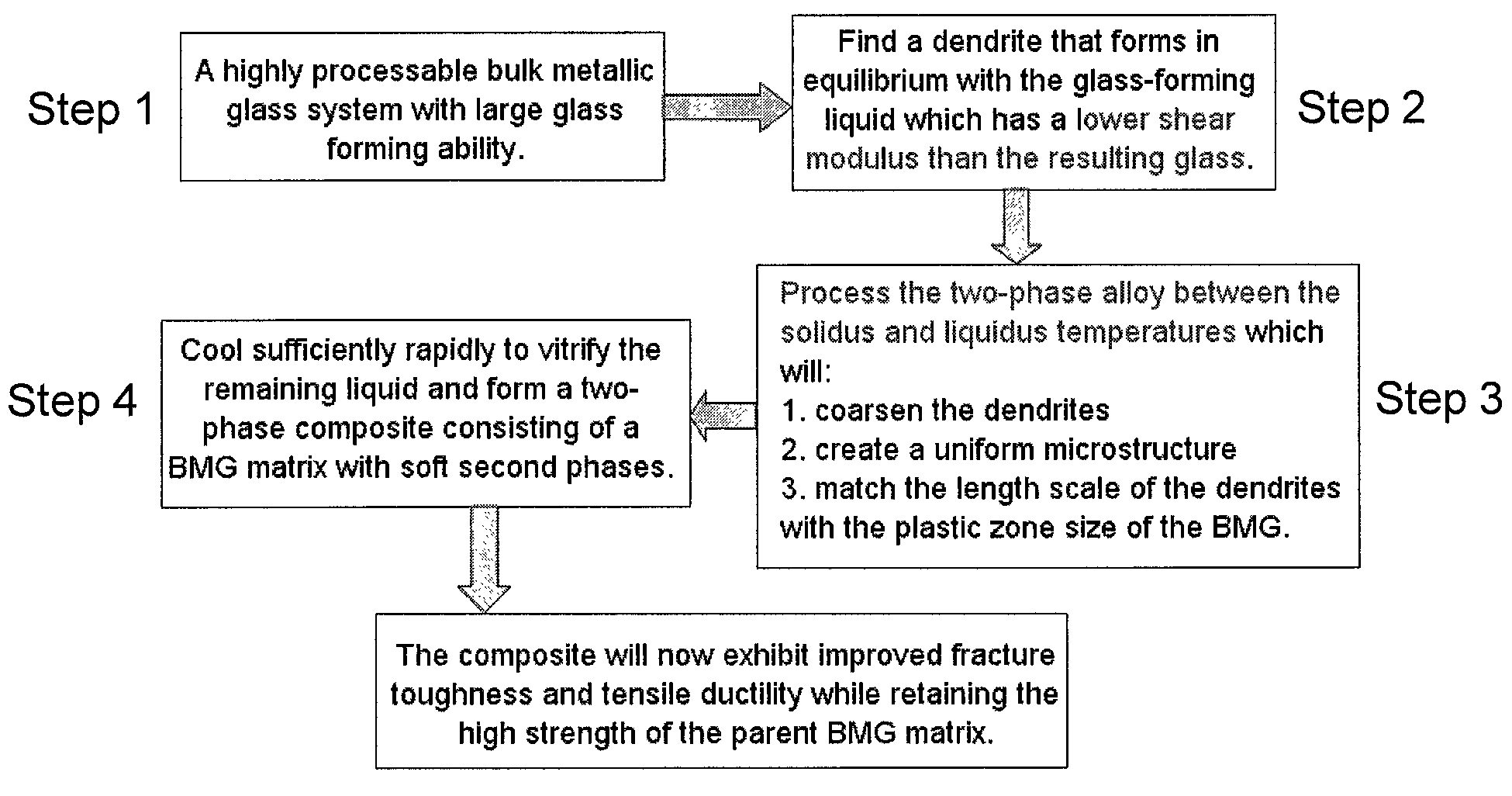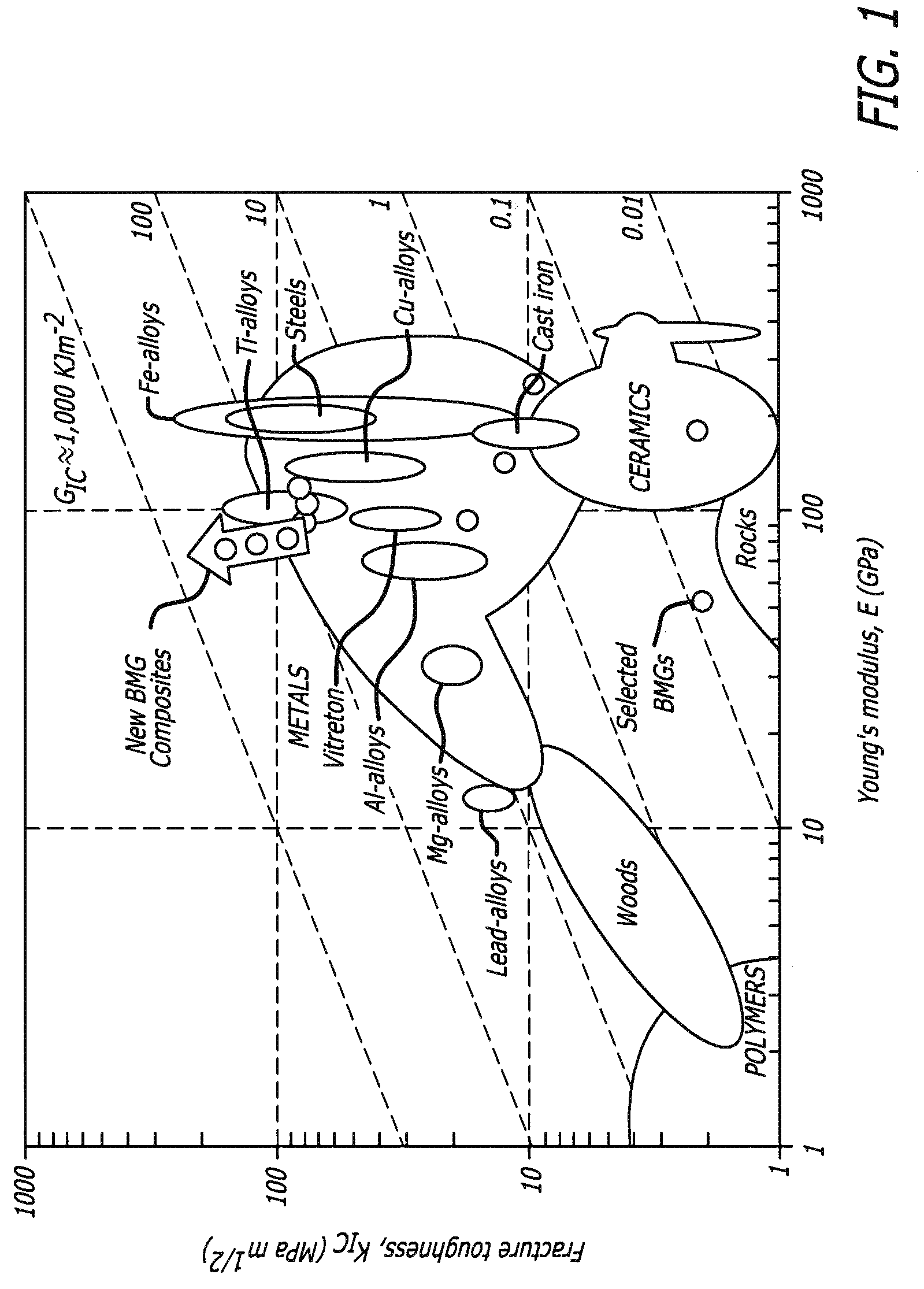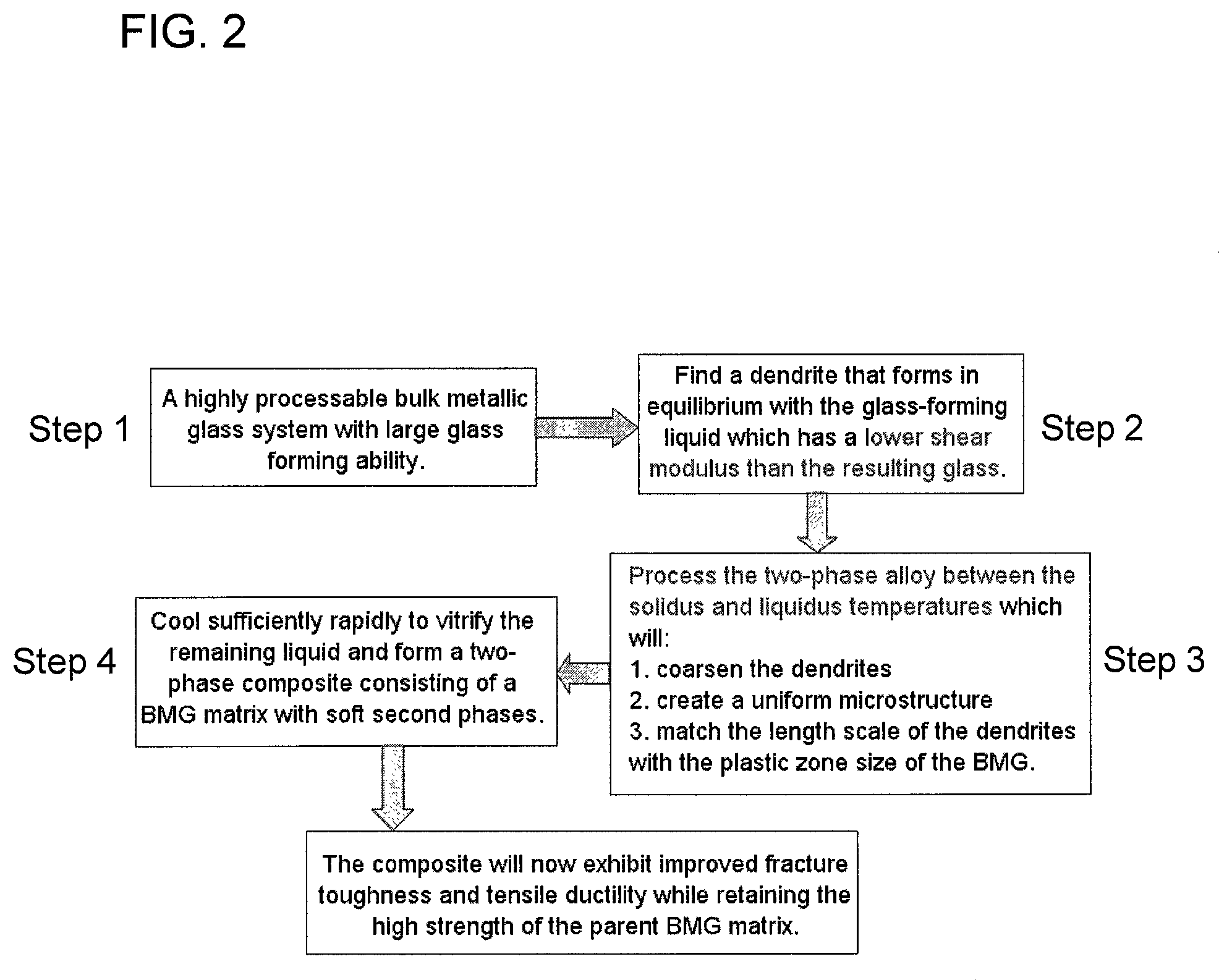Semi-solid processing of bulk metallic glass matrix composites
a technology of metallic glass and composites, applied in the field of forming bulk metallic glass engineering materials, can solve the problems of brittleness, lack of ductility, and failure in an apparent manner, and achieve the effects of avoiding brittleness, avoiding brittleness, and avoiding brittleness
- Summary
- Abstract
- Description
- Claims
- Application Information
AI Technical Summary
Benefits of technology
Problems solved by technology
Method used
Image
Examples
examples
Methodologies
[0051]The exemplary alloys formed in accordance with the current invention were prepared in a two-step process. First, ultrasonically cleansed pure elements were arc-melted under a Ti-gettered argon atmosphere. Second, the ingots were placed on a water-cooled Cu boat and heated via induction, with temperature monitored by pyrometer. The second step is used as a way of semi-solidly processing the alloys between their solidus and the liquidus temperatures. This procedure coarsens the dendrites, produces RF-stirring, and homogenizes the mixture. Samples were produced with masses up to 35 g and with thicknesses ˜1 cm, based on the geometry of the Cu boat. Samples for mechanical testing were machined directly from these ingots and tests were performed in accordance with ASTM standards, where applicable. Elastic properties were measured ultrasonically.
[0052]ASTM standard tension tests were prepared in proportion with the ASTM E8M standard. The diameter of the gauge section wa...
PUM
| Property | Measurement | Unit |
|---|---|---|
| size | aaaaa | aaaaa |
| particle size | aaaaa | aaaaa |
| volume fraction | aaaaa | aaaaa |
Abstract
Description
Claims
Application Information
 Login to View More
Login to View More - R&D
- Intellectual Property
- Life Sciences
- Materials
- Tech Scout
- Unparalleled Data Quality
- Higher Quality Content
- 60% Fewer Hallucinations
Browse by: Latest US Patents, China's latest patents, Technical Efficacy Thesaurus, Application Domain, Technology Topic, Popular Technical Reports.
© 2025 PatSnap. All rights reserved.Legal|Privacy policy|Modern Slavery Act Transparency Statement|Sitemap|About US| Contact US: help@patsnap.com



